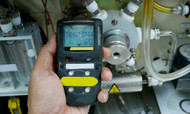Gas Detectors and Regulations: What You Need To Know
27th Dec 2023
Regulations for gas monitors serve as a safeguard, setting precise standards on their use to ensure the protection of individuals and the environment from potentially hazardous gases. These rules dictate the required features, operational procedures, and maintenance schedules for gas monitors. Discover what you need to know about gas detectors and regulations to keep your workspace and community safe.
Know the Regulatory Standards
Different industries have specific requirements when it comes to gas detection systems. These regulations include standards established by organizations such as the Occupational Safety and Health Administration (OSHA), the National Fire Protection Association (NFPA), and the American National Standards Institute (ANSI), among others. Understanding these guidelines and applying the right regulations to your industry ensures that you meet the necessary safety criteria.
Tips for Knowing Applicable Standards
To know the regulations that govern your industry’s use of gas monitors, start by researching relevant safety protocols established by authoritative bodies like OSHA, NFPA, or ANSI. Then, consult a safety or environmental regulatory professional within your organization or hire an external consultant to ensure the correct interpretation and implementation of these guidelines.
Understand the Different Types of Gas Detectors and Their Functions
There are several types of gas detectors on the market, each designed to detect specific types of gases. These include the following:
- Single-gas detectors: These devices detect a single type of gas. They are portable, inexpensive, and easy to use, making them popular for personal safety.
- Multi-gas detectors: These detectors can detect multiple gases simultaneously, making them ideal for industrial and commercial settings where there may be a variety of hazardous gases present.
- Fixed detectors: Businesses permanently install fixed gas detectors in a specific location to continuously monitor the air for specific types of gases. They are commonly used in industrial settings and public places where there is a high risk of gas leaks.
The right gas detector for your setting depends on the types of gases present in your environment and the specific needs of your industry. For example, parking garage gas detection is used to monitor carbon monoxide and other exhaust fumes. These monitors are critically important because harmful gases can accumulate quickly in an enclosed parking garage.
Stay Updated on Changing Regulatory Standards
It’s important to know that regulations for using gas detectors evolve over time, and organizations must update their equipment and processes to keep up with these changes. This might mean updating your gas detectors to incorporate new technology or enhancing your existing system to meet more stringent safety specifications.
Regulatory bodies such as OSHA, NFPA, or ANSI may update their safety standards based on new research findings or industry best practices. These changes can include new safety protocols, stricter limits on acceptable gas levels, or additional training requirements for gas detector users.
Implementing the latest standards helps maintain a safer environment and can even help your business avoid hefty fines for non-compliance. Make sure you stay in touch with the appropriate authorities, industry associations, and suppliers for the latest updates on regulatory standards, and adjust your safety protocols accordingly.

